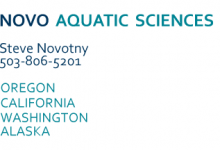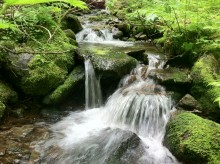Fish Reconnaissance and Presence / Absence Surveys
Novo Aquatic Sciences, Inc. can provide Our Clients services to determine the presence or absence of various fish species of concern in a particular body of water. These surveys are often used to determine correct forrest practices under state and federal environmental regulations in waters of the Pacific Northwest.
Fish Tissue Analysis
Novo Aquatic can assist Our Clients with services to analyze contamination and toxicity to fish and the environment to assess ecological and human health risk. In 2006, Principal Scientist Steven Novotny (while with SWCA / Fishman) managed and led multiple sampling method surveys in a Lower Willamette River Superfund site to assess and capture targeted fish species and conduct tissue analysis, with detailed documentation and individual reports created and incorporated into the larger superfund site investigations report.
Fish Population Studies
Novo Aquatic can assist Our Clients with myriad services to evaluate types and abundance of fish species in a particular area, using appropriate survey methods and modeling in order to provide best-science accurate population estimations, including fish species abundance, species distribution, fish size, and species habitats.
Electro Fishing Techniques
Novo Aquatic can provide Our Clients the electro-fishing sampling process, by which electricity is used in the water to stun, capture and study populations of fish. The benefit of this technique is that, when conducted by professionals with experience in this field of expertise, the fish are quickly returned unharmed to their habitat, minimizing mortality.
Specialized Snorkel Surveys
Novo Aquatic can provide Our Clients snorkel surveys using standardized underwater procedure where biologists wear snorkel gear to observe fish activity in streams. While this method can be used to observe other species, it is most commonly used for endangered bull trout and other salmonids because the method is less invasive. The fish are not handled, which makes it ideal for sampling these protected species. This method is also effective in remote locations where other means of sampling may not be feasible or permitted.




